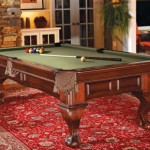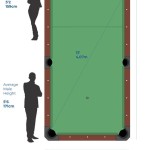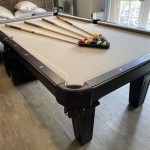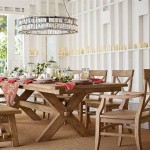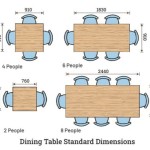What Are The Dimensions Of A Snooker Table?
The precise dimensions of a snooker table are critical to the integrity of the game. These dimensions, meticulously defined and regulated, influence gameplay, strategy, and the overall experience for both professional players and casual enthusiasts. Understanding these dimensions is crucial for anyone interested in the sport, whether for building a table, purchasing one, or simply appreciating the intricacies of snooker.
Snooker table dimensions are not arbitrary. They have evolved over time, influenced by historical factors, playing styles, and a desire to create a consistent and challenging environment. Standardizing these dimensions ensures fair competition and allows players to develop their skills on tables that adhere to a uniform standard.
The official dimensions are governed by the World Professional Billiards and Snooker Association (WPBSA), the governing body for professional snooker and billiards. These regulations are meticulously documented and enforced in professional tournaments, ensuring that every match is played on a table that meets the required specifications.
While subtle variations may exist in tables manufactured for home use or recreational settings, understanding the official dimensions provides a baseline for appreciating the game's design and the challenges it presents.
Key Dimension: Table Size
The most significant dimension of a snooker table is its overall size. A full-size snooker table, adhering to professional standards, measures 12 feet by 6 feet. This measurement refers to the playing area, which is the space between the inside edges of the cushions. The precise measurement in metric units is 3569 mm in length and 1778 mm in width. It's important to note that these dimensions are not exact; a small tolerance is permitted. The WPBSA regulations stipulate a tolerance of +/- 13 mm (0.5 inches) for the length and +/- 6 mm (0.25 inches) for the width.
The 12-foot by 6-foot size is considerable, demanding a substantial room to accommodate the table with ample space for players to maneuver around it comfortably. A smaller room will hinder gameplay significantly. Adequate space allows for unrestricted cueing and prevents accidental contact with walls or furniture.
The large size contributes to the strategic depth of snooker. The long distances between balls necessitate accurate cueing, precise positional play, and a thorough understanding of angles and spin. The size of the table allows for intricate snooker situations and complex tactical maneuvers, making snooker a highly challenging and strategic game.
Beyond the full-size table, smaller versions are available, often referred to as "half-size" or "three-quarter size" tables. These are designed for smaller rooms or for players who are learning the game. While the proportions are generally maintained, the overall dimensions are scaled down. These smaller tables are often used in pubs or for recreational play but are not used in professional competitions.
The accurate construction of the frame that supports the playing surface is crucial to achieving the required dimensions. The frame must be robust and stable to prevent any warping or sagging of the table over time. Any deviation from the specified dimensions can affect the ball's trajectory and make the game unpredictable.
The Height and Composition of the Cushions
The cushions, also known as rails or bumpers, are the resilient borders around the perimeter of the table. Their primary function is to rebound the balls during gameplay. The dimensions and composition of the cushions are as important as the overall table size in determining how the game is played.
The height of the cushions is precisely regulated. According to WPBSA regulations, the height of the cushion facing should be 36mm +/- 1mm above the surface of the slate playing area. This height ensures that the balls rebound consistently and predictably. Variations in cushion height can significantly affect the angle of rebound, leading to inconsistent gameplay.
The composition of the cushions is also critical. They are typically made of a high-quality rubber compound that provides the necessary resilience and rebound characteristics. The rubber must be durable and maintain its elasticity over time to ensure consistent performance. The type of rubber used can vary slightly, but it must meet specific standards for rebound coefficient and durability.
The shape of the cushion facing is equally important. It is typically a triangular or L-shaped profile designed to maximize surface contact with the ball and provide a consistent rebound angle. The profile of the cushion is carefully engineered to minimize energy loss during impact and create a predictable rebound trajectory.
The cushions are covered with cloth, matching the cloth covering the slate bed. This cloth provides a smooth, consistent surface for the balls to travel along and also protects the rubber cushions from wear and tear. The cloth is tightly stretched and secured to the cushions to prevent any wrinkles or creases that could affect the ball's trajectory.
The precise angle at which the cushions are attached to the frame is also controlled. This angle affects the ball's rebound angle and contributes to the overall consistency of the table. The angles at the corner pockets are particularly important, as they influence how the balls react when struck near the pockets.
The Significance of the Slate Bed
The playing surface of a snooker table is not simply a stretched piece of cloth. Beneath the cloth lies a meticulously crafted slate bed. The quality of the slate bed is paramount to the table's performance, influencing the ball's roll, speed, and overall gameplay consistency. The slate bed provides a perfectly flat and rigid surface that allows the balls to travel smoothly and predictably.
The WPBSA regulations specify the thickness of the slate. Typically, a full-size snooker table slate bed is composed of five individual pieces, each generally 1.5 inches (38 mm) thick, although this can vary slightly. This thickness is essential to ensure the slate's rigidity and prevent any warping or sagging under the weight of the table and the constant impact of the balls.
The slate must be perfectly level. Achieving a perfectly level surface is a complex process that requires skilled installation and precise adjustments. Leveling the slate ensures that the balls roll true and predictably across the table. Any unevenness in the slate can cause the balls to deviate from their intended path, making the game unpredictable.
The slate bed is covered with a specialized cloth, typically made of a fine, tightly woven wool. The cloth provides a smooth, consistent surface for the balls to travel along. The nap of the cloth, the direction in which the fibers lie, can affect the ball's roll. Professional players are highly attuned to the nap and adjust their shots accordingly.
The cloth is tightly stretched and secured to the slate bed, ensuring that it is wrinkle-free and taut. Any wrinkles or creases in the cloth can affect the ball's trajectory and make the game unpredictable. The colour of the cloth is usually green. The green color is designed to mimic the appearance of grass, reflecting the game's origins in lawn games.
The slate bed is precisely cut to accommodate the pockets. The pockets are precisely shaped and positioned to ensure that the balls fall cleanly into them. The size and shape of the pockets are also regulated by the WPBSA. The depth of the pockets are standardized to prevent balls from bouncing out of them. The pockets must be deep enough to securely contain the balls once they fall in.
The cost of a snooker table is largely determined by the quality of the slate bed. High-quality slate is dense, durable, and perfectly flat. Cheaper tables often use inferior slate or composite materials, which can compromise the table's performance. The quality of the slate used in the bed impacts on the overall life expectancy of the snooker table.

What Size Room Will I Need For My Snooker Table Liberty

Snooker Table Buyer S Guide Liberty

Supreme Pool Table Room Size Information

Pool Table Room Size Calculator

What Size Room Will I Need For My Snooker Table Liberty

Buy Classic Third Size Snooker Table Union Billiards

Snooker Table Layout Dynamic Billiard Mississauga

Fcsnooker Snooker Table Hole Centres For The Legs

Snooker Wikipedia

Room Size Specifications Olhausen Billiards
Related Posts

